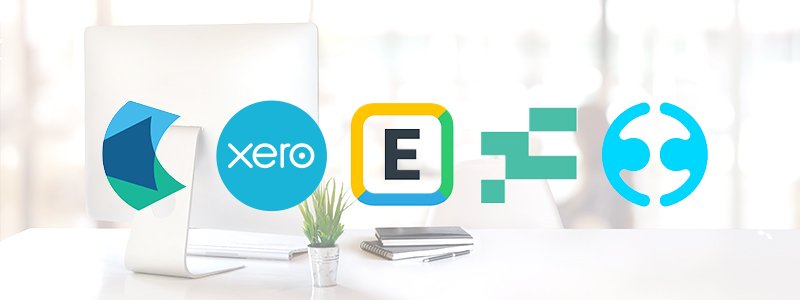Automating your accounts is fundamental to business success, freeing up critical time for more important tasks. Increase your productivity with these cloud accounting tools.
Accounting Automation will guarantee time savings.
Administrative tasks take up a truly massive amount of time for any business. Statistical data published in 2017 reveals that small to medium enterprises in Australia lose 4.9% of their working time on repetitive administrative tasks, representing a $31.8 billion dollar burden on the Australian economy.
Managing your business accounts is a time-consuming process that often involves the manual entry and sorting of vast amounts of documents and financial data. The time cost associated with account management is exacerbated by the high probability of human error in data entry, which can further drive up administrative expenses.
The development of cloud-based accounting solutions, optical character recognition technology, smartphone-based expense tracking, and high-powered report generation services, however, provide business owners with the opportunity to significantly lower the cost of managing business accounts while gaining deeper insights into their data.
We’ll proceed to break down five powerful tools that you can use to automate your business accounts and increase your productivity.
1. Xero: Take Your Accounting to the Cloud
Shifting away from clunky, slow-moving locally-hosted accounting software and taking your small business accounts to the cloud can significantly improve your business productivity. Cloud accounting services such as the Xero accounting automation solution provide businesses with the security and processing advantages offered by large-scale hardware at a fraction of the cost of traditional accounting solutions.
Adopting cloud computing solutions has been proven to dramatically improve the efficiency and productivity of small businesses in all areas. IBM statistical data reveals that adopting cloud-based process management solutions drives business innovation and assists in the development of new operating capabilities.
Xero is able to automate a broad spectrum of small business account tasks, freeing up schedule time and allowing business operators to focus on more important tasks. Using Xero, it’s possible to automatically generate and send invoices, quickly generate in-depth reports, and automate the payroll process.
The modular nature of Xero allows businesses to add or remove functionality as needed, with third-party apps offering expanded features through direct integration.
2. Expensify: Minimize Expense Tracking Costs
Expensify is a dedicated expense tracking application that can be linked directly to the Xero cloud accounting software suite. Expense tracking is often a time-consuming process that requires small business owners to manually assess and approve or deny expense submissions. The Expensify accounting automation solution can help here.
Expensify provides users with a simple smartphone app that can be used to scan receipts and invoices, which are then logged as expenses. The Expensify app uses optical character recognition technology to automatically collect and categorize expense data, and can even be used to set rules that will automatically approve or deny submitted expenses.
Expensify also minimizes the amount of time spent on mileage tracking, using the in-built GPS functionality of smartphones to automatically log mileage data. Expensify integrates directly with Xero, autonomously forwarding approved expense information and freeing up valuable administration time.
3. Employment Hero: Streamline Your Payroll
HR and payroll management is another time-intensive task that contributes to administrative workload and is a prime target for accounting automation. Like Expensify, Employment Hero can be linked directly to Xero — but is focused on automating the HR and payroll management process.
The Employment Hero solution is able to reduce the amount of time spent on HR-related administrative tasks by 80%, automating the employee onboarding process and allowing employees to manage themselves. Using the Employment Hero smartphone app, employees are able to submit personal information changes, leave requests, or participate in performance reviews — all of which can be moderated by business owners via the same app.
All of the transactional HR tasks that are performed in Employment hero are automatically forwarded to Xero, ensuring that payroll, leave, superannuation, and other related information are captured accurately with minimal time investment.
4. Hubdoc: Digitize Your Documents
Small businesses typically handle a vast amount of documents that must be logged as part of the accounting process. Receipts, invoices, bank statements, and emails can quickly stack up, creating a lengthy backlog of documents that must be sorted through.
Hubdoc is a document digitization platform and accounting automation tool that works in a similar manner to Expensify. Rather than focus solely on expense management, however, Hubdoc is designed to capture information via your smartphone camera, email, or even directly from service providers and banks in order to capture statements and bills.
Using Hubdoc, small businesses can create searchable, indexed databases of relevant financial documents to create an entirely paperless business account management process. Importantly, all of the data collected by Hubdoc can be linked to Xero, creating a complete audit trail.
5. Fathom: Make Your Data Work for You
All of the automation tools above are capable of generating massive amounts of data — capturing actionable insights and predictions from this data is what makes an average business great.
Fathom is a powerful report generation tool that is able to capture information form Xero and create easy to understand, visually stunning reports that deliver deep insight into the performance, cash flow, profitability, and future of any small business.
The five tools outlined above are able to eliminate a vast amount of paperwork and tedious, time-consuming administrative work and data entry, lowering the cost of business accounts and increasing small business productivity.
If you’re interested in increasing the productivity of your business and automating business accounts, reach out to Fullstack today for detailed guidance on getting started with cloud accounting software.
Was this article helpful?
Related Posts
- Startup Accounting Policies
Startups often have unique business models which can raise difficult questions about the most appropriate…
- Cloud Accounting - Which Accounting Platform
We've done the hard yards in trialing out the cloud accounting solutions so you don’t…
- How to Automate your Accounts & Reduce Timespend
Welcome to the age of automation! Here's how to employ the power of automation to…
- Crowdfunding
Crowdfunding is making some big waves in recent times - we cover why many founders…













